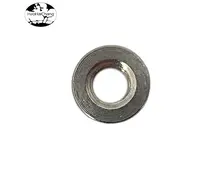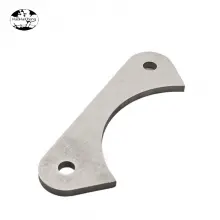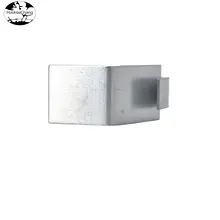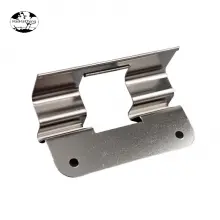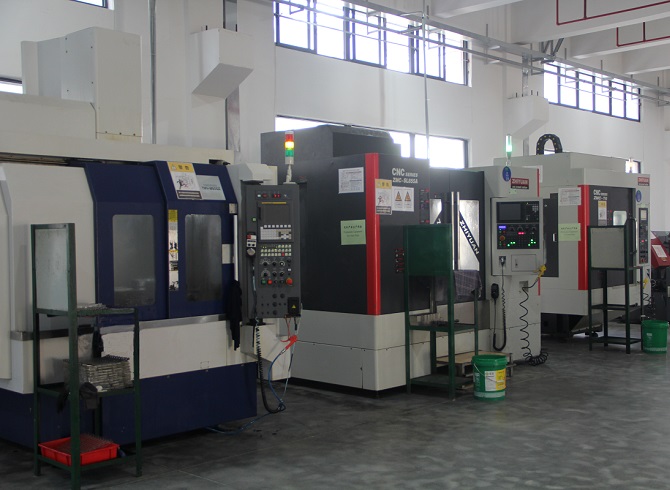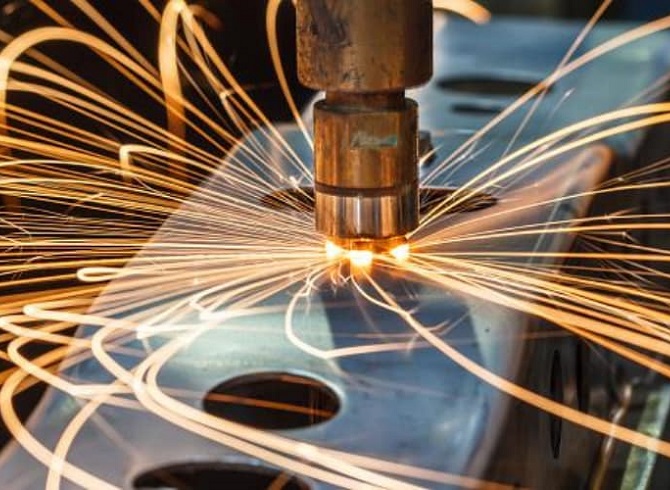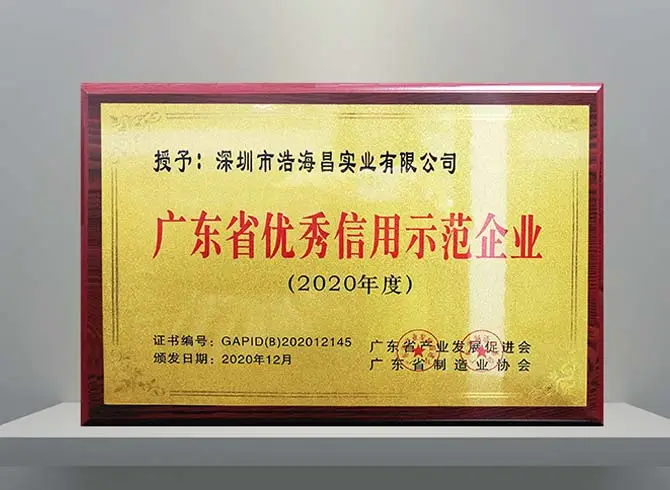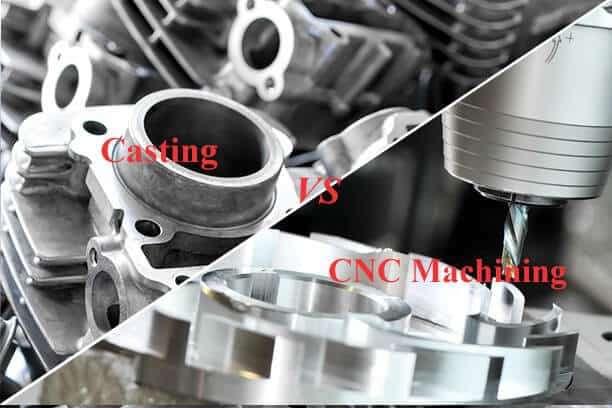
When manufacturing metal parts, product designers may have multiple manufacturing methods to choose from. Two commonly used options are casting and CNC machining. However, how do you determine which is the most suitable for your specific application? What factors should you consider when making a wise decision?
This article outlines two metal manufacturing methods: CNC machining and metal casting. It discusses the advantages and disadvantages of each method, provides guidance on choosing the right method based on key factors, and summarizes the differences between the two methods.
l What is Casting?
l What is CNC Machining?
l Casting vs. CNC Machining: How to Choose the Right Method?
l Conclusion
l Using HHC for CNC Machining or Casting Projects
.jpg)
Casting is a manufacturing process that involves the use of molds to produce parts. There are various types of casting methods to choose from, and they can be employed with different materials. However, this article specifically focuses on metal casting and does not cover other materials, such as epoxy resin that might be used for applications like multi-component casting.
In metal casting, the process entails pouring or injecting molten metal into pre-made molds (sometimes referred to as dies). If complex internal geometries or cavities are required, cores or inserts are used. Once the part has cooled and solidified, cleaning and machining are performed to achieve the desired surface finish. In certain cases, additional CNC machining may be carried out as a secondary operation to further refine the cast metal component and achieve tighter tolerances.
There are various metal casting technologies to choose from, and the selection is based on factors such as the chosen material, the size and shape of the casting, and other specific attributes. Some popular casting methods include die casting, sand casting, investment casting, and lost wax casting.
Casting can be employed to produce a variety of parts, such as turbine blades, train wheels, car pedals, and engine cylinder blocks. Castings find applications in various industries, including aerospace, automotive, consumer goods, and medical devices.
Pros
Casting offers a wide range of design possibilities, allowing the creation of complex and unique shapes, including intricate internal cavities.
For large-scale production, casting is more cost-effective compared to machining. Additionally, the production time for casting is faster.
The use of reusable molds in casting ensures a high level of repeatability, as identical part copies can be consistently created.
Casting is highly efficient in the use of metals. Virtually all metals used in the process become part of the final product. Any excess metal or scrapped parts generated during the casting process can be easily melted down and recycled.
Cons
While technologies like die casting and precision investment casting can provide high precision, CNC machining is often a better choice for achieving precision and strict tolerances.
For smaller production quantities, the cost per part in casting is typically higher compared to machining.
Production of castings often takes more time due to the requirements of designing and procuring molds.
Casting has limitations in the selection of available metal materials compared to CNC machining.
Cast parts typically require additional post-processing steps, such as removing excess casting material or using sandblasting to eliminate burrs.
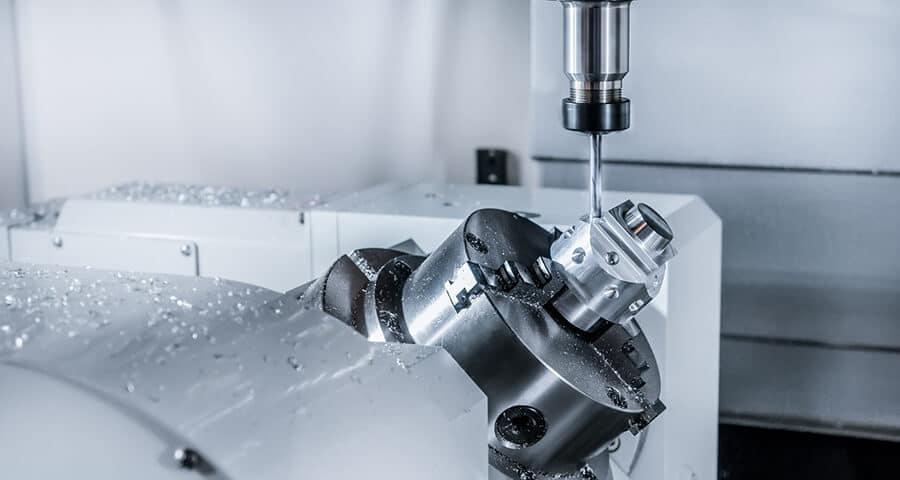
CNC machining is a manufacturing method that involves using cutting tools to remove material and achieve the desired shapes. To control the machining process, computer programs with G-code instructions are commonly used to guide CNC machines such as mills, lathes, and other equipment. CNC machining encompasses various types of processes, including milling, turning, drilling, and boring, depending on specific requirements.
CNC-machined parts find widespread applications in different industries. They are crucial for manufacturing metal laptop casings, small components in smartphones, and essential elements used in aerospace and automotive parts. Additionally, CNC machining plays a vital role in the production of fixtures, jigs, and even casting molds.
Pros
CNC machining can produce high-precision parts that meet strict quality requirements, featuring precise dimensions and smooth surfaces.
When machining unique or small quantities of parts, it is often faster than the casting process.
For small-batch production and rapid prototyping, CNC machining typically has lower costs per part.
CNC machining is compatible with a variety of metals, making it a versatile process.
Cons
CNC machining is less suitable for creating internal cavities within parts and is more geared toward shaping external geometries.
It is costly for large-scale production, but the cost per part remains relatively stable regardless of the batch size compared to casting.
Certain parts with complex designs or specific materials may require longer machining times, making CNC machining less cost-effective for large-scale production.
CNC machining generates more metal waste compared to casting, and the recycling process may be more labor-intensive. Typically, waste needs to be transported offsite for proper recycling.

The specific requirements of a part, such as its shape, size, and geometry, influence the choice of the manufacturing process. CNC machining and casting each have advantages for different geometries, so how do we decide which one to use? When determining the appropriate manufacturing method for a given part, several factors need to be considered:
In some cases, the choice of manufacturing process may be straightforward. If you need a large quantity of parts, in the tens of thousands or more, casting methods are often more cost-effective. Although creating the initial mold takes time, each casting can be produced quickly, and the additional costs are relatively low.
On the other hand, CNC machining can produce the first few parts faster and more economically. However, as the production volume exceeds a certain point, cost-effectiveness diminishes.
Therefore, the primary consideration when choosing a manufacturing method is the required production volume. If you need dozens of parts for prototyping or a few hundred to a few thousand parts for small-batch production, CNC machining should be considered. For quantities of 10,000 or more, sand casting or die casting would be more suitable. However, for volumes in between these extremes, various factors come into play, influencing the optimal choice of manufacturing method.
Shifting from machining to casting can save time and reduce waste. However, casting also has some drawbacks, including:
Flash: After casting, excess material (known as flash) may need to be removed.
Porosity: Thick parts may sometimes exhibit small air pockets (porosity) that may become visible during machining. Post-processing may be required.
Flow patterns and brittleness: The flow of molten material during casting may lead to visible patterns on the surface, and filling the ends may result in colder areas that are more prone to brittleness.
In certain cases, even with a quantity of 10,000 pieces cast, certain parts may still require additional machining due to specific requirements. This may increase the overall cost of the parts, but sometimes performance requirements outweigh cost considerations.
CNC machining has a significant advantage when time is crucial. Machined parts can be produced within hours of creating the CAD model. On the other hand, casting takes more time as it involves creating molds and setting up the casting process. Even if the final production will be done through casting, machining offers a faster alternative. It allows modeling, machining, and testing of parts at a much lower cost compared to casting some prototypes. This can be especially valuable for iterating and fine-tuning parts based on test results, which can be done multiple times without incurring the higher costs and longer delays associated with production molds and necessary fixtures.
The production volume of prototypes may vary, from single parts used for lab testing to large quantities for beta testing or testing for marketing purposes.

When considering the appropriate manufacturing technique, the geometric shape of the part is crucial. For example, a design that requires the removal of a large amount of material may be time-consuming and result in excessive waste. In such cases, casting is often a suitable choice. This is particularly true for hollow parts with thin walls, large internal spaces, and complex geometries that would be time-consuming to machine.
Manufacturing internal cavities through CNC machining, especially those requiring additional assembly or metal joining processes for sealed enclosures, is often more challenging. In contrast, casting can simplify the design, eliminating the need to assemble multiple small parts. Instead, the entire part can be cast as a single entity.
However, using casting to create certain functional features can be challenging. For instance, features like undercuts or complex internal shapes require intricate molds and additional components such as cores and inserts. Sharp edges or corners are less suitable for casting, and all surfaces of cast parts need to be drafted. Additionally, large or irregularly shaped thick-walled parts are best produced using CNC machining, as these shapes are difficult to uniformly fill and cool during the casting process.
In metal casting, various methods can be employed to produce final-use parts, such as die casting and sand casting:
Die casting is a process similar to injection molding. It involves injecting molten metal (such as aluminum, copper, zinc, or their alloys) into steel molds, then allowing it to cool and solidify. Additional machining may be required at times to add threads, improve sealing surfaces, or refine specific details. Machining serves as a precision step, offering flexibility to create various variants from a single cast piece.
In comparison to die casting, sand casting is a less refined process. The surface finish of sand castings tends to be rougher, and there may be subtle variations between the two halves of the mold and the inserts used, necessitating additional machining. Sand casting is typically employed for parts that do not require a smooth and polished appearance, such as automotive engine blocks. In more complex applications, like creating coolant passages around engine cylinders, additional machining may be needed to achieve the desired final shape. Some design features unique to sand casting cannot be replicated through die casting or CNC machining.
CNC machining is often used for the production of small quantities of parts, ranging from dozens to several thousand. It is a fast and efficient process that doesn't require the same setup tools as casting methods. Besides small-batch production, CNC machining can also be utilized to create prototypes of parts that will eventually undergo die casting or sand casting, allowing for testing and design refinement. It can also be employed for bridge tooling, meaning that during the development of molds for mass production, CNC machining is used to temporarily manufacture production parts.
Compared to CNC machining, casting generates less waste. In the casting process, only the material required for the final part is used, with minimal additional metal flowing through channels such as sprues, runners, and gates. Removing excess material and melting it for reuse in other components is straightforward.
However, in contrast to CNC machining, casting provides a more limited selection of materials. Nearly all alloys are compatible with CNC machining, whereas the range of metal alloys suitable for casting is more restricted.
The casting process typically takes several weeks from start to finish. Once the molds are prepared, the casting process itself is relatively fast, making it suitable for producing large quantities of parts. However, mold design and machining require some lead time. While certain casting methods use disposable molds, these molds still need quality checks and maintenance. On the other hand, die casting employs permanent molds, and as the part volume increases, the time and cost per part decrease.
In contrast, CNC machining offers a faster production speed, expediting the turnaround for small-batch parts. There's no need to wait for mold manufacturing—only a CAD model, CAM program, a CNC machine, and expertise in starting part production are required.
Repetition plays a crucial role in manufacturing, and the casting process excels at producing consistent parts. Once the molds and processes are fine-tuned, each part can be manufactured identically. For instance, when die casting aluminum, tolerances can be maintained within +/- 0.25 millimeters (up to 25.4 millimeters). For precision casting, standard casting tolerances can be as small as 0.01 inches (up to 1 inch), and even smaller at 0.002 inches. The achieved precision can vary based on the material used. For example, aluminum casting tolerances for cast parts may be lower compared to machined aluminum parts. However, zinc casting can achieve tighter tolerances. You can refer to our post for more information on the differences between casting aluminum and machining aluminum.
Metal CNC machining is also a highly repeatable and precise process, capable of achieving tighter tolerances than casting. For standard metal machining, reasonable expected tolerances are 0.025 millimeters (0.001 inches). Precision machining can produce parts with tolerances as small as +/- 0.0002 inches through Runsom Precision's specific processes.
Variability in demand is also a significant consideration. If demand fluctuates or you only need to occasionally produce additional parts, CNC machining is often the better choice. CNC machining enables faster production and on-demand manufacturing, especially with the advancements brought about by the digital transformation in manufacturing. Through CNC machining, you can order parts as needed, avoiding the risks of overproduction and excess inventory.
In contrast, if you anticipate a large demand and are gearing up for production, casting becomes a viable option. Casting is well-suited for high-volume parts and offers a faster overall production process.
If you are currently in the prototype phase of the design process, casting is generally not recommended. This is because with each design change, you incur the expense of recreating or adjusting the costly molds. This significantly increases lead time and costs. In fact, prototype die casting costs can be high. Although sand casting is typically cheaper, there isn't a significant advantage in prototype manufacturing.
On the other hand, CNC machining, due to its flexibility in adapting to design changes, is a better choice for prototype production. When your design is still evolving, all you need to do is modify the model and update the CAM program—no need to create new molds or modify existing ones. This can save time and resources in the prototype production process.
So, when to choose casting over CNC machining, or vice versa? The decision depends on several crucial factors: at which stage you are in the development process, how many parts you need, how demand might fluctuate, and the specific shape of the parts.
In the end, the optimal manufacturing process depends on the specifics of your situation. You might have a unique combination of requirements that necessitate creatively solving problems to find the best solution.
As discussed in this article, each manufacturing method has its own advantages and disadvantages. By considering factors such as part shape, required quantity, quality standards, and project timelines, you can make informed decisions for your project. In fact, your project might even benefit from a combination of casting, CNC machining, and precision machining technologies!
If you have any uncertainties or difficulties in making decisions, we recommend reaching out to our skilled engineering team at HHC CNC Machining. We provide reliable, professional services for CNC machining and various casting processes such as die casting, sand casting, investment casting, and secondary machining options. Our goal is always to help you efficiently produce high-quality products at an affordable price.
Discuss your project with us, and we can offer effective guidance to help you make informed decisions or develop integrated solutions. Get an instant quote now and experience our customized manufacturing services for faster, easier, and more efficient part delivery.


